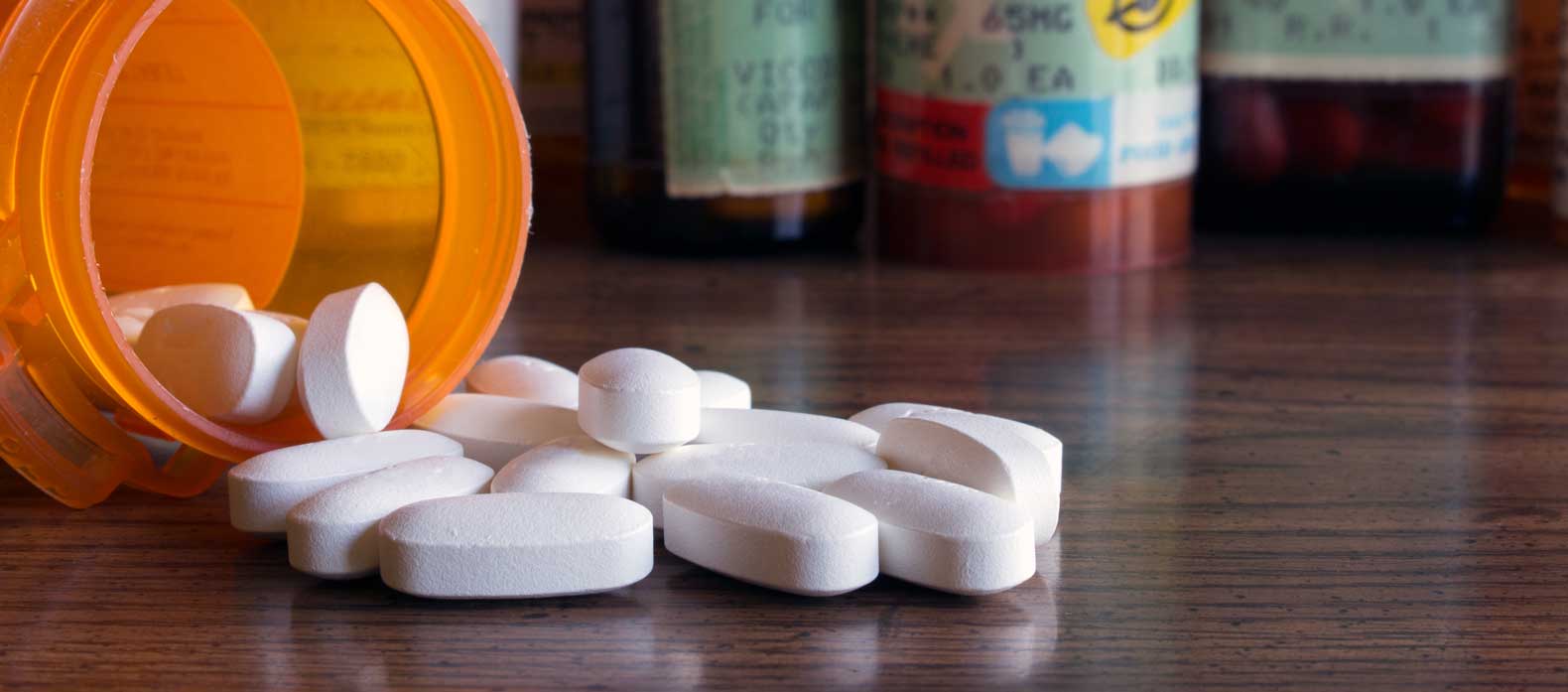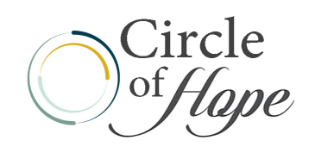
Opioids are a group of drugs that act on opioid receptors to produce effects similar to those of morphine. They are primarily used for pain relief but doctors may prescribe them to suppress cough and diarrhea. Some opioids are also used in replacement therapy for people addicted to other short-acting opioids. Though they have established medical uses, opioids are often used recreationally for their euphoric effects and they can quickly become addictive.
Some opioids, such as oxycodone, are legal when prescribed by a doctor while others, such as heroin, are illegal. Not only do people source illicit opioids on the street but they may abuse their prescribed medication. Many start out with a legitimate prescription and later end up sourcing cheaper, more easily accessible, illegal opioids after they become addicted.
Just like other addictive substances, opioids can take over an individual’s life, often with deadly consequences. If your or a loved one is struggling to control the use of either prescription or illegal opioids, you may meet the diagnostic criteria for an opioid use disorder. You should seek professional help as soon as possible.
Types of Opioids in America
There are several opioid drugs in use ranging from tramadol and other “minor opioids” to ‘fentapills’ and counterfeit prescriptions. People also use:
- Oxycodone
- Methadone
- Fentanyl
- Opium
- Heroin
- Codeine
- Morphine
- Sufentanil
- Hydrocodone
The abuse of any of these drugs can lead to an opioid use disorder.
What Is an Opioid Use Disorder?
An opioid use disorder is a substance use disorder characterized by extreme dependence on opioids. Individuals feel compelled to use opioids as their tolerance for the drug increases and they experience withdrawal symptoms when they discontinue use. A person with an opioid use disorder continues using opioids even though they experience negative cognitive, behavioral, and physical problems.
How Common Are Opioid Use Disorders?
Opioid use disorders have reached epidemic levels in the United States. They affect over 16 million people across the globe and more than 2.1 million in the US. Every year, there are more than 120,000 opioid-related deaths worldwide with 47,000 of them occurring in the US. Of the estimated 20 million Americans who abuse substances, two million of them use prescription opioids while 500,000 use heroin.
How Opioid Receptors Work in the Brain
Everyone has opioid receptors in the brain. Normally, naturally occurring neurotransmitters act on these receptors to produce responses in the body that are similar to those of opioids. When a person takes opioids, they bind to these receptors in the brain and elsewhere in the body. Opioids mimic the effects of those pain-relieving chemicals that the body produces naturally. That’s what makes opioids so good at relieving severe pain.
However, opioids also create a feeling of well-being and affect the brain’s reward systems. Even people who take their medication as prescribed can become addicted. However, this risk is increased when individuals take larger doses or frequent doses than prescribed. Combining prescription opioids with alcohol or other medication can also make addiction more likely.
Root Causes of Opioid Use Disorders
Anyone can become dependent on opioids and each person who suffers from opioid use disorder is different. However, substance use disorders result from a number of genetic, environmental, and behavioral factors. Researchers have identified some risk factors for opioid addiction including:
- Heavy or regular tobacco use
- Family history of substance abuse or addiction
- Personal history of drug use
- Personal history of mental health disorders
- Unemployment or poverty
- Severe stress at home or work
- Previous involvement in criminal activity
- Tendency to engage in thrill-seeking or risk-taking behavior
Symptoms of Opioid Use Disorders
People who have opioid use disorders can display physical, psychological, or behavioral signs and symptoms. Physical symptoms include:
- Shaking
- Loss of coordination
- Drowsiness
- Sweating
- Shallow or slow breathing
- Constipation
- Severe nausea or vomiting
- Slurred speech
Meanwhile, psychological and behavioral signs symptoms:
- Drastic mood swings
- Changes in sleeping patterns
- Depression
- Anxiety attacks
- Irritability
- Decreased motivation
- Poor decision making
- Abandonment of responsibilities
- Financial hardship
- Spending less time with family and loved ones
Even though these signs may indicate that you or someone you love has an opioid use disorder, it is important to get a professional diagnosis. The criteria for an opioid use diagnosis are set out in the Diagnostic and Statistical Manual of Mental Disorders, Fifth Edition (DSM-5).
Individuals who display two or three symptoms over a 12-month period are diagnosed as having a mild opioid use disorder. Those with four or five symptoms are considered moderate and six or more symptoms are indicative of a severe opioid use disorder.
The criteria are:
- Frequently taking opioids in larger amounts or for a longer time than intended
- Having a persistent desire or making unsuccessful attempts to reduce or control opioid use
- Spending a lot of time getting opioids, using opioids, or recovering from the effects of using opioids
- Experiencing cravings or a strong desire to use opioids
- Failing to fulfill obligations at school, work, or home because of recurrent opioid use
- Continuing to use opioids despite experiencing recurrent or persistent social or interpersonal issues that are caused or exacerbated by the effects of opioids
- Giving up or reducing participation in important social, occupational, or recreational activities because of opioid use.
- Using opioids repeatedly in situations where it is physically dangerous
- Continuing to use opioids even though you know they’re likely causing or exacerbating a persistent or recurrent physical or mental problem
- Developing tolerance. This is defined as either needing significantly increased amounts of opioids to achieve the desired effect or experiencing a significantly diminished effect when using the same amount.
- Experiencing withdrawal in the form of characteristic opioid withdrawal syndrome or taking the same or a closely related substance to avoid withdrawal symptoms
Treatment for Opioid Use Disorder
Once an individual has been diagnosed, treatment is important. Since addiction rewires the brain, it’s almost impossible to simply stop using opioids. There are various levels of care in addiction treatment and finding the right option is one of the first steps in the recovery journey.
Treatment can save lives and help people struggling with opioid addiction to take control of their lives again. Substance abuse treatment is enabling individuals to contribute positively to the family, workplace, and community. However, the specific nature of the treatment depends on the individual’s needs and the setting in which they’re receiving care.
In many cases, inpatient treatment for opioid dependence is best. Also known as residential treatment, inpatient programs offer several benefits including:
- 24/7 supervision. This ensures that patients have support from professionals around the clock.
- A lack of distractions. Since patients stay in the facility for the duration of these treatment programs, they are protected from external triggers and stressors. There’s also no access to drugs or alcohol.
- Access to a sober community. People in residential treatment are surrounded by other people who are on a similar journey. The bonds formed during this time often last well after the program is over.
Medication-Assisted Treatment for Opioids
People who are addicted to opioids often benefit from a combination of medications and counseling and behavioral therapies. This is called medication-assisted treatment (MAT). The medications used are approved by the Food and Drug Administration and programs are customized to each patient’s needs. Research shows that MAT can be more effective than medication or therapy alone.
The prescribed medications help to normalize brain chemistry and body functions, block the euphoric effects of opioids, and reduce cravings. In some cases, MAT can reduce the need for inpatient detoxification since withdrawal symptoms are kept at bay.
MAT can:
- Decrease illicit opioid use and other criminal activity
- Improve survival rates
- Improve treatment retention
- Improve patients’ ability to find and maintain jobs
- Improve birth outcomes among pregnant women with opioid use disorders
Partial Agonists Vs Full Agonists
The medications used to treat opioid use disorders act on the same receptors as drugs like fentanyl and heroin. Methadone is a full opioid agonist. This means it binds completely to the mu-opioid receptor. Methadone prevents other opioids from causing euphoria while also relieving the usual opioid withdrawal symptoms.
Unlike commonly abused opioid agonists, the effects of methadone last a long time. This prevents the peaks and valleys that cause individuals to engage in repeated drug-seeking behavior.
Meanwhile, buprenorphine is a partial agonist so it doesn’t fully bind to the mu-opioid receptor. While it keeps withdrawal symptoms at bay, its effects plateau. No matter how much an individual takes, they won’t experience a high or experience negative side effects such as breathing difficulties.
Buprenorphine is often combined with naloxone which is a potent opioid antagonist. This combination drug is often sold as Suboxone. If a person takes the drug in a way that isn’t intended, they will experience uncomfortable symptoms.
The third medication approved to treat opioid use disorder is naltrexone. This is an opioid antagonist that blocks the mu-opioid receptor and prevents opioids from having the usual effects. Since opioid antagonists don’t cause a high, individuals can’t become dependent on them. Naltrexone is used to prevent relapse but it doesn’t relieve or prevent withdrawal symptoms.
Aftercare and Long Term Recovery from Opioids
Since opioid use disorder is a chronic condition just like diabetes or hypertension, aftercare is crucial for long-term recovery. When individuals complete treatment, they are better able to cope with stress and manage triggers. However, they are by no means cured. Without ongoing support, they could relapse.
Aftercare covers various types of care and support that follow rehab. However, the overall aim of these programs is to build on the skills learned during rehab and provide additional help such are career counseling and substance abuse monitoring.
Some common forms of aftercare include:
- Outpatient treatment. This is often the next step for people who leave inpatient programs. Outpatient aftercare programs often combine individual counseling, group therapy, peer support programs, and medication-assisted treatment.
- Sober living homes. These are group homes for people recovering from substance addiction. Sober living homes help individuals to transition into the community after inpatient treatment.
- Individual counseling. Recovery is an ongoing process. Keeping up with regular therapy sessions prevents relapse and helps to sustain recovery. In therapy, individuals work to identify their triggers for opioid use and develop healthier coping skills.
- Family therapy. Addiction affects the entire family. Relatives can learn how to improve their communication and support the person in recovery.
- Group counseling. People in recovery benefit from sharing their experiences with their peers and learning from each other. Group therapy can assist individuals in recognizing that they are not alone.
- Peer support groups. These volunteer-led groups may or may follow 12-step programs. There are a wide variety of peer support networks across the country. Some welcome anyone in recovery while others are for specific demographics such as youth, women, or people of a certain faith.
Get Treatment for Your Opioid Use Disorder from Circle of Hope Rehab
There are many drug treatment centers in California and it can be difficult to find the right one for your unique needs. Circle of Hope is one of the best treatment facilities in the state. We’ll gladly chat with you to help you decide if our luxury addiction treatment center offers the right programs for you.
We take an evidence-based approach to addiction treatment and we always put our clients first. We appreciate that each individual is different so we never take a one-size-fits-all approach to the treatment of opioid use disorders. Instead, we carry out comprehensive evaluations and tailor our programs to meet each person’s needs. Circle of Hope offers a full continuum of care ranging from detox to aftercare planning. Contact us today to get more insight into how we can help you.

